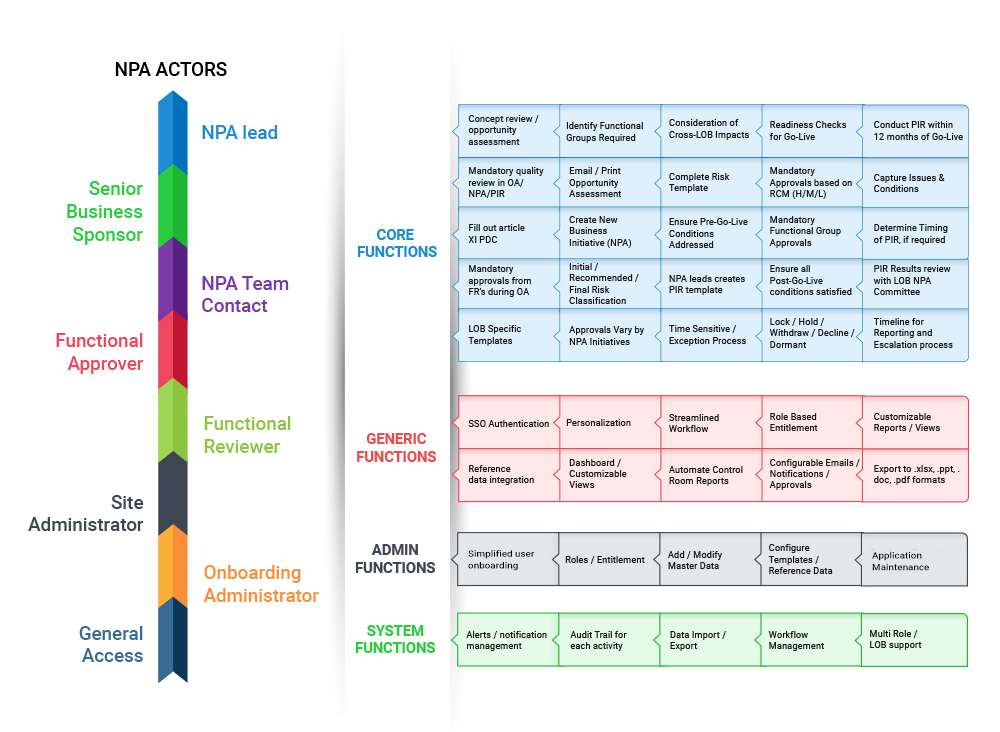To facilitate an appreciation of the key features required in an NPA platform, it helps to first set the stage for what constitutes the NPA process. While initiatives are mostly specific to an LOB, such as launching a new product, a new campaign, a new customer touch activity, launching a new branch; there are also cross-LOB initiatives, such as where a bundled product or service is being offered(e.g. a package of a deposit account, a card, and a revolving loan).
There are four principle roles in the NPA process:
- NPA Lead: This role creates the initiative and takes it through all the key stages. An initial risk assessment of the initiative is performed by the lead.
- NPA Partner: This role is the intermediary between the lead and the functional reviewers and committee members. The partner completes the final risk assessment following discussions with the functional reviewers.
- Functional reviewers: Set of legal, compliance, IT, and operations roles that assess the initiative and provide final approvals with pre-conditions and post-conditions.
- Committee members: Set of executive management roles responsible for offline discussions with the NPA partner and functional reviewers. These generally have read-only access to the NPA platform and the actual updates to the initiative are done by the NPA partner.
There are three key stages in the NIBIA process:
- Opportunity Assessment (OA): An initial test is performed on the initiative to validate whether it needs to go through this stage. Also, an assessment is done whether AML checks need to be performed or not. The NPA lead creates the initiative with a detailed description, initial risk assessment, and financial forecasts and uploads all supporting documents. Once the NPA Partner reviews the opportunity and assesses whether it is time sensitive and needs additional reviewers, the opportunity is ready for proceeding to the next stage if it meets the hurdle benchmarks. Otherwise, the initiative is withdrawn.
- NPA Approval (NPA): This is the stage where the initiative is taken through an approval process for implementation. Key steps here include a very detailed risk assessment, functional reviews, and a final review by committee members. Each pre-conditions and post-conditions for go-live which are binding on the initiative. For pre-live conditions, these have to be addressed by the NPA lead prior to the final approval being obtained. Post go-live, conditions are put in place for the final stage.
- Post-Implementation Review (PIR): After a stipulated period, the implemented initiative is reviewed by the NPA lead and NPA partner to assess whether the post-go-live performance of the initiative matches pre-go-live forecasts. Post go-live conditions are also evaluated and actions are taken if required.






